British boosters go for a test drive
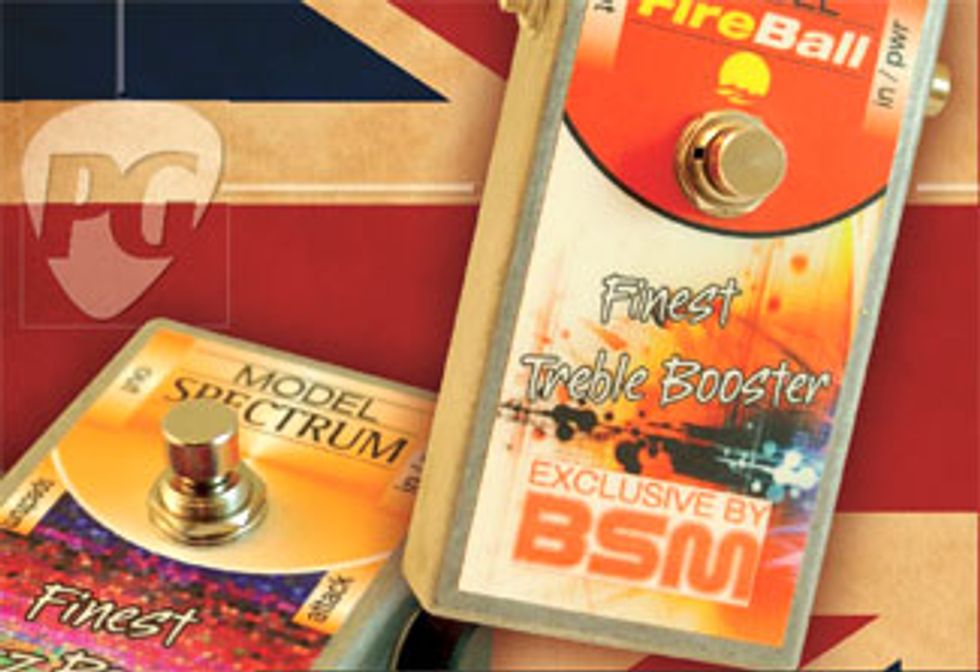 |
|
The tone produced whenever we’ve plugged a Strat into a Marshall Major has been 180 degrees from the warm, defi ned crunch Ritchie Blackmore achieved with the same setup. I suspected it had something to do with the wizard sleeves and pilgrim hat, but it turns out Mr. Blackmore used a Hornby-Skewes treble booster which was responsible for his seemingly incongruous tone.
BSM has gone to great lengths to suss out what made the British-born Skewes tick, determining what modifi cations the pedal’s iconic users – Blackmore, Tommy Bolin, and others – made to their boosters. The result has been the release of original models, as well as models representing the various mods made to these understated boxes by their legendary owners.
We figured since BSM went through all of this trouble, the least we could do is put the pedals through their paces. Our testing recipe included two Premier Guitar editors, a Strat and a 65Amps SoHo with the Master and Bump switches turned off. We also kept a humbucking guitar and a P-90 equipped Jr. on deck, just in case – sorry, no scalloped board Strats this time.
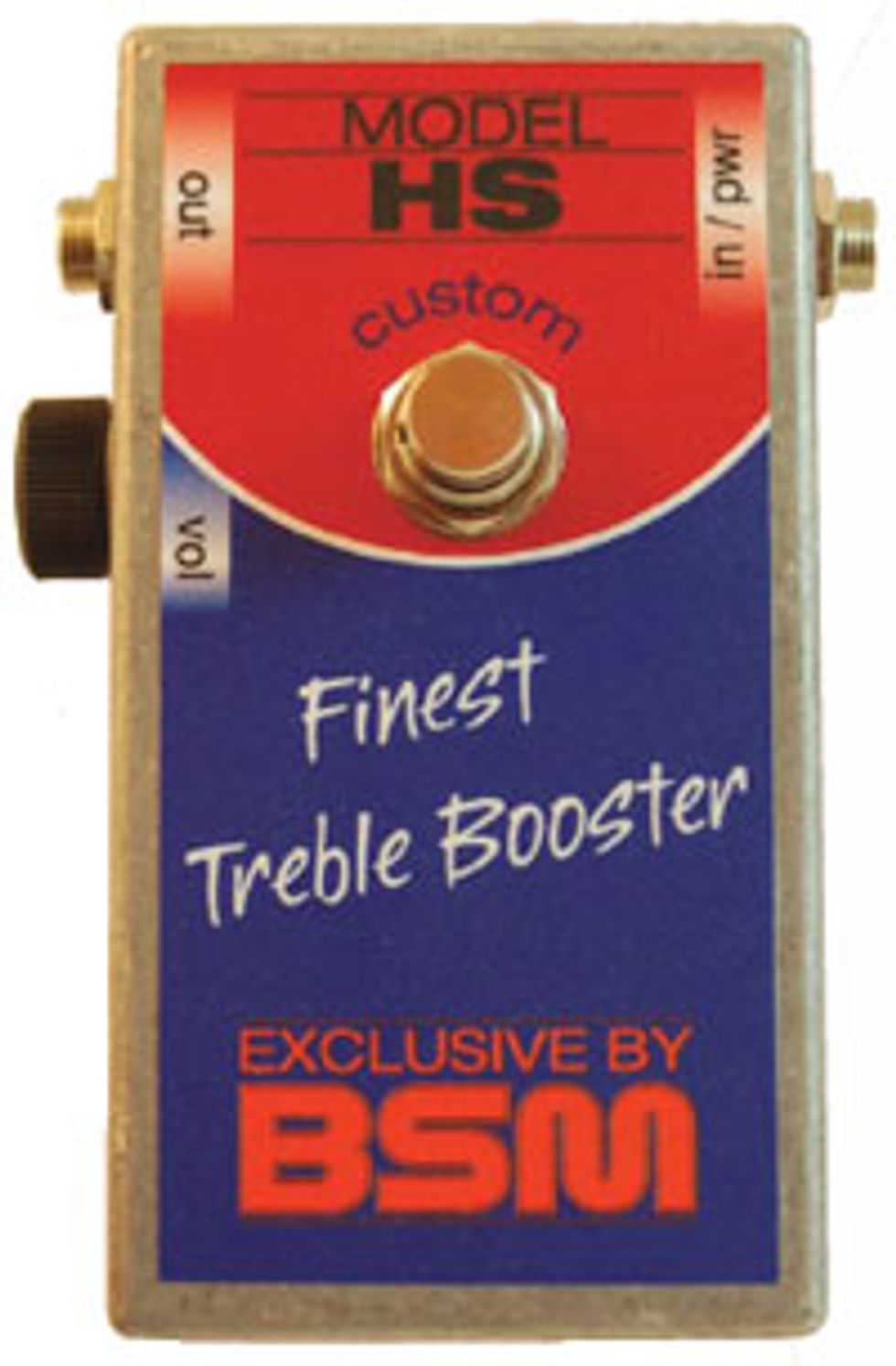 The HS-C
The HS-CA real germanium sound – a crazy, batshit, out-of-control sound like certain old Fuzz Faces.
The first pedal we plugged in was the HS-C ($259.99), based on Ritchie Blackmore’s modified Hornby-Skewes boost. This germanium transistor-based unit differs from the original Hornby- Skewes due to the addition of a volume control, just like Ritchie’s. BSM designed it to give “Machine Head” era drive with the volume about half way up, so that’s where we started, and we were greeted with instant British Isle goodness.
The volume knob acts as a level control, and is a great addition, allowing added grit below unity gain at its lowest setting, and bludgeoning the front end of your amp at the highest settings. The HS-C cleaned up very well by rolling the volume on the Strat down to around six. It still colored the sound, but in a pleasing sort of way. The sound was as clean as bypassing the pedal, but sounded a little more hi-fi, like a Z-Vex Super Hard-On at close to unity gain. Even at full throttle, there was little coloration, with the exception of the previously mentioned hi-fi thing, which Adam and I both considered a plus. With the HS-C’s Volume control rolled back to around noon, we were able to go from Rory Gallagher on the bridge pickup to Brian May on the front, middle and out-of-phase positions. It was a little compressed, but always nice and crunchy. This pedal would easily nail the Blackmore tone if Adam and I weren’t so afraid of tinnitus, as things were plenty loud enough with a 20-watt amp.
Summary:
The HS-C is the perfect pedal to give your Strat a bigger set of balls. Brian May and Rory Gallagher live here. The HS-C is a great way to fatten up your single coils without adding excess color.
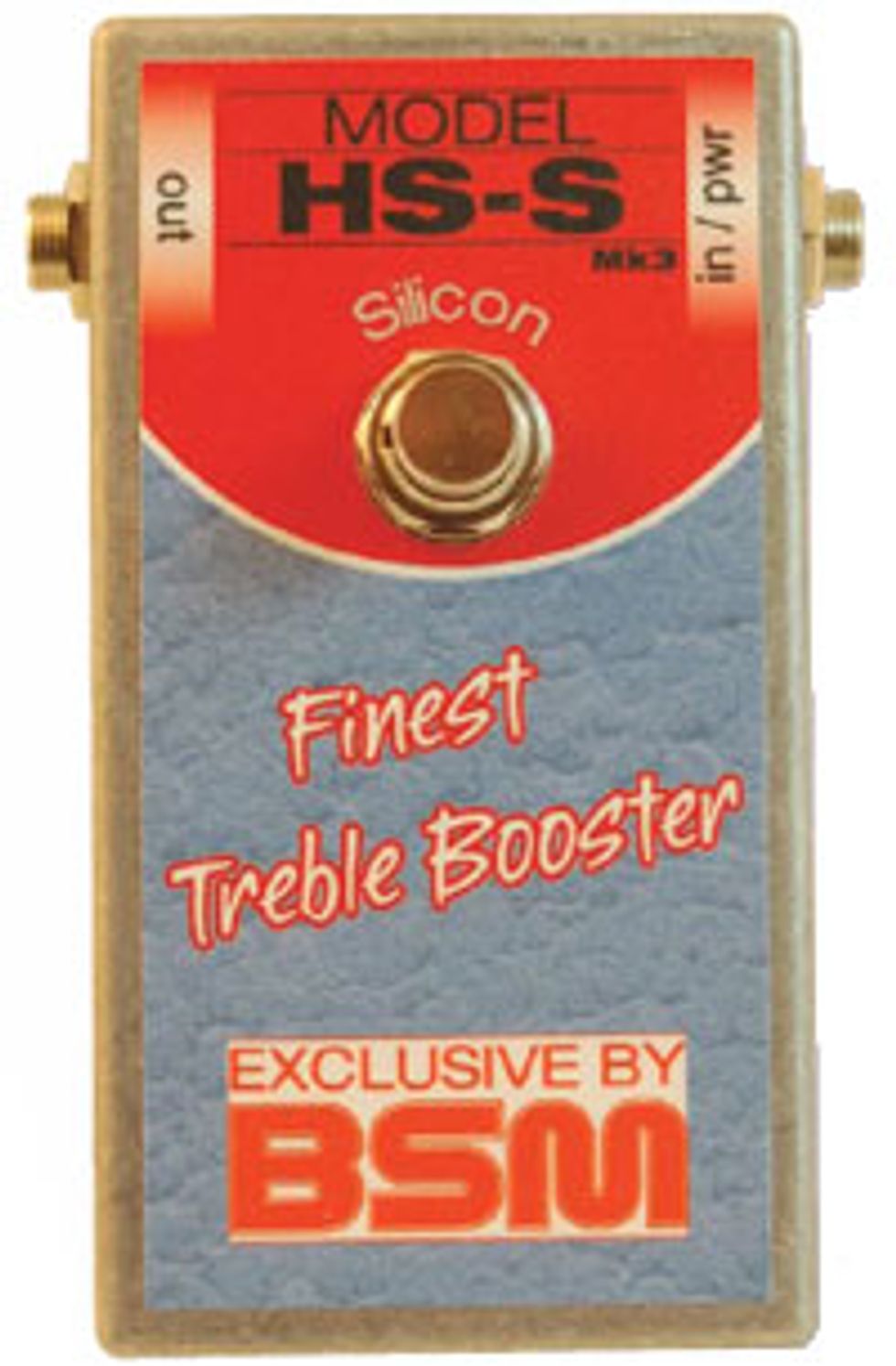 The HS-S
The HS-SA dynamite sound; suitable for all kinds of throwback rock.
The last “S” in HS-S ($219.99) stands for silicon, and reflects Hornby-Skewes’ change in pedal manufacturing in the late ‘60s. This is a copy of Mr. Blackmore’s go-to boost in the studio, and is partly responsible for the etched-into-everyone’s- DNA “Smoke on the Water” riff. The HS-S embodies simplicity itself with a no-frills, single on-off switch. I don’t know if I’m alone in thinking this, but silicon, whether in a fuzz or a boost, has always sounded distinctly American to me, and this pedal is no different.
When switched on we were met with a big, full, very pleasing sound, with a hollowed- out, cocked-wah tone replacing the decidedly hi-fi vibe of the HS-C. We found this pedal’s more conservative nature to be extremely usable for all kinds of crunch, as it never goes over the edge and retains articulation well. It comes across as smoother than the HS-C, but fails to clean up from the guitar’s volume knob as well, instead accentuating treble frequencies as the volume drops. This pedal would probably be more viable for a larger percentage of players due to its instantly usable tone.
Summary:
A good go-to pedal when your boost needs to encompass more than Queen covers. The HS-S is able to go from Deep Purple to Zeppelin without breaking a sweat.
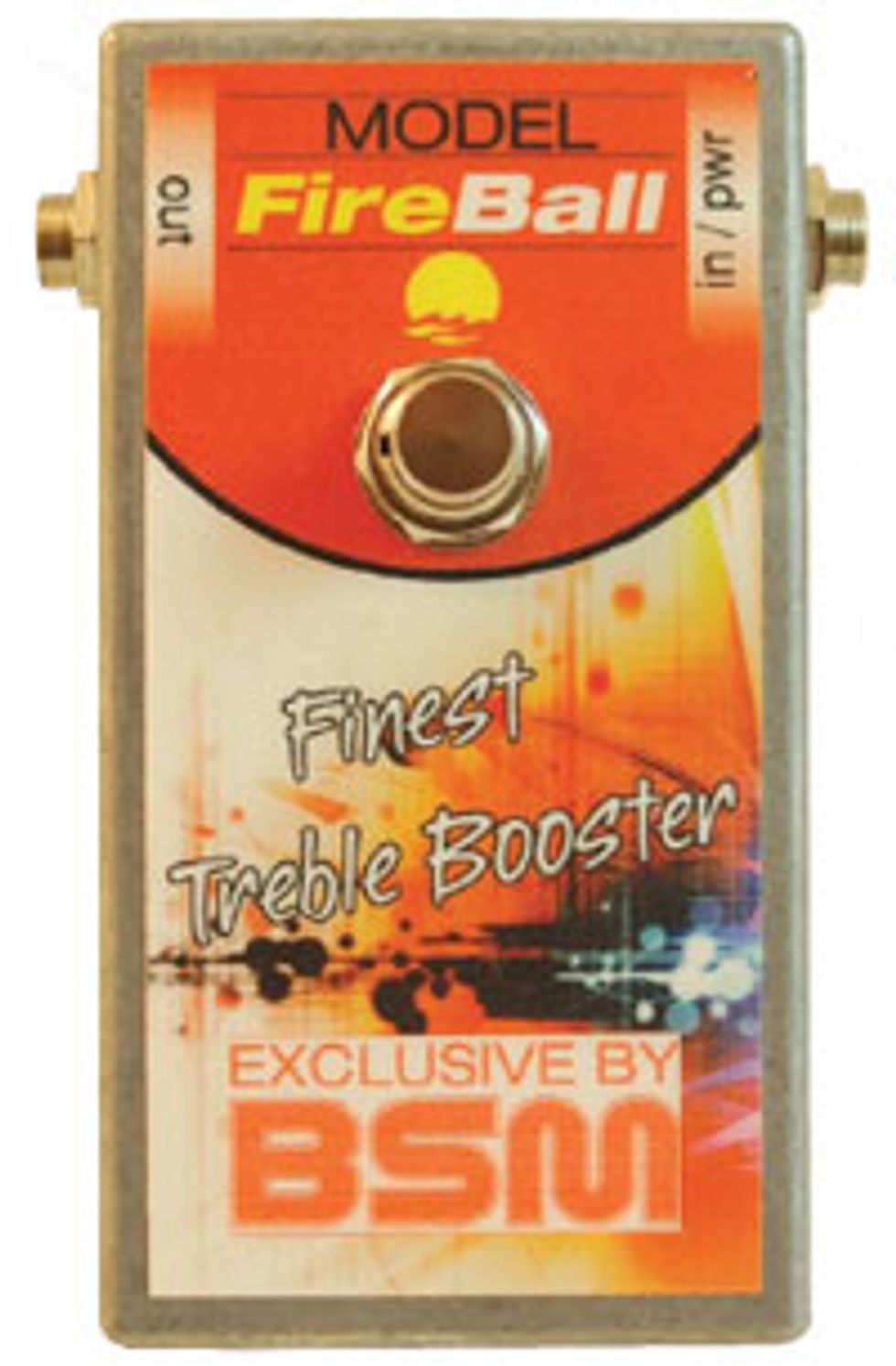 The FireBall
The FireBallDoes the live Blackmore thing for days, and then some.
Next up is the FireBall ($299.99), and no, it isn’t an obscure reference to a 1966 Frankie Avalon movie, but instead the Deep Purple album of the same name. The FireBall is basically a tuned, limited production version of the early, germanium Hornby- Skewes units, made to more closely replicate Blackmore’s live tone during Deep Purple’s heyday.
Plugged in, the FireBall didn’t disappoint. Lot’s of bite with a Strat, allowing the player to push the preamp harder, while never getting mushy. It is more than capable of the early ‘70s, live Blackmore tone, in addition to some convincing Jimmy Page sounds. There is plenty of gain on tap, but it remains more controllable than the HS-C, and cleans up from the volume knob just as well. This pedal is perfect for those who already have the tone they want – they just need to give their amp a bit more of a kick to the pants.
Summary:
Not as crazy as the other pedals – there’s more gain under the hood of the Fireball than with the others, but it stays completely controllable.
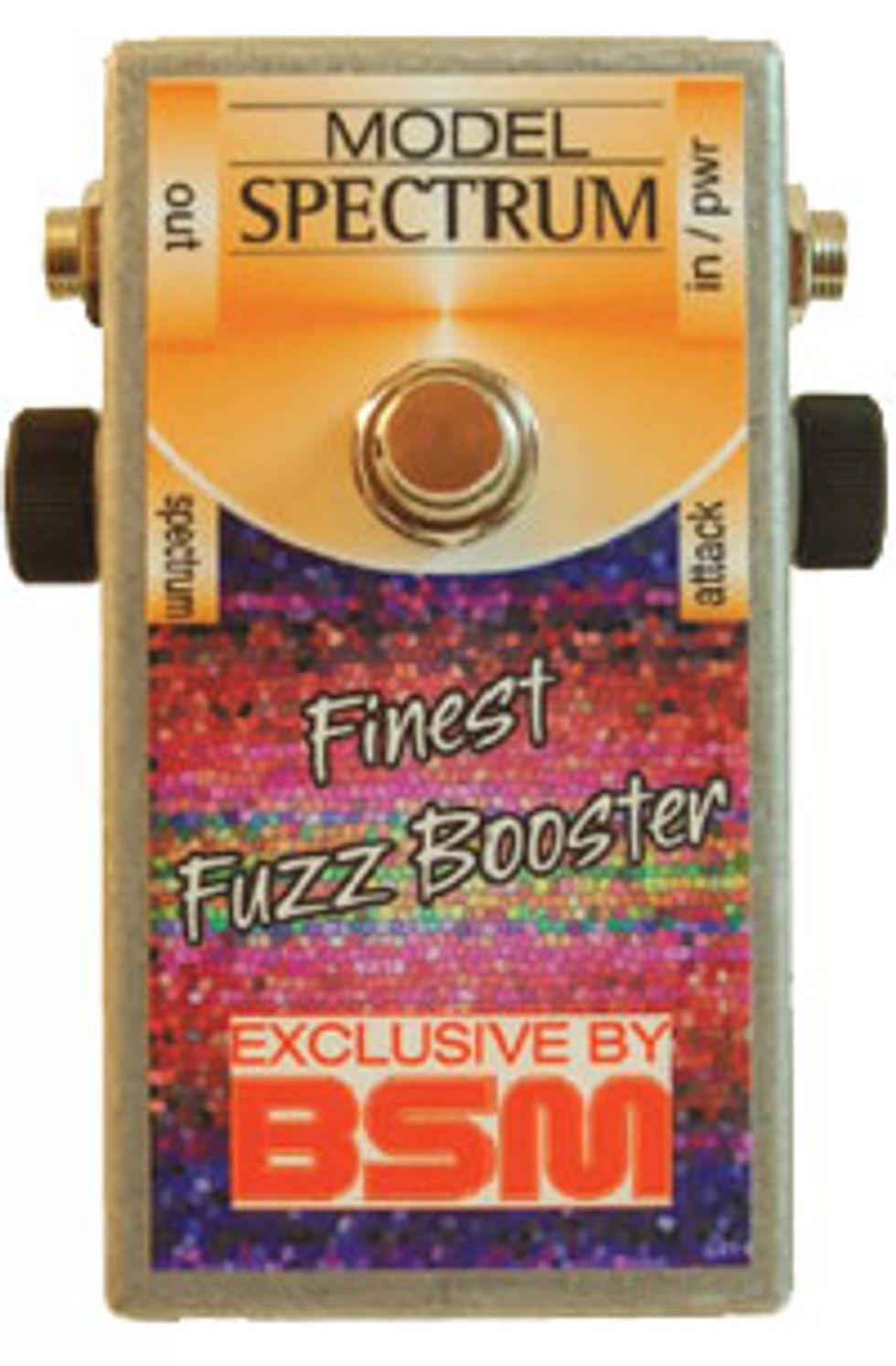 The Spectrum
The SpectrumCapable of a nice Stonesy-grind, but with the twist of a knob, the Spectrum can jump off the deep end of the pool while flipping off the lifeguard.
The Spectrum Fuzz-Booster ($279.99) is BSM’s tribute to the other guitar hero in Deep Purple: Tommy Bolin. Tommy’s signal chain is the stuff of legends, and, depending on who is talking, was either an old Fuzz Face or a Sam Ash fuzz. BSM knows, but isn’t saying, and it’s fine with us because either way, this pedal is capable of some truly amazing tones.
The controls are a knob labeled Spectrum on one side and another labeled Attack on the other. The Attack knob is like a tone control, going from AM radio thin at its lowest setting, and capable of rhino-herd thickness at the opposite end. With both Attack and Spectrum at zero we achieved a great AM-radio-through-asingle- crappy-car-speaker sound. Rolling Attack about halfway up became glorious, and all the way was barely controllable with the Strat, and ridiculous with humbuckers – albeit ridiculous in a good way, since the Spectrum is one of the few pedals BSM voices for both single coils and humbuckers.
The Spectrum knob affects the pedal’s resonance, and is extremely usable, allowing guitarists to “tune” feedback to a particular room or stage. It basically helps to determine the octave at which the notes will feedback. With Attack rolled up and some experimentation with the Spectrum knob, Robert Fripp-like sustain is easily achieved. Moving the Spectrum knob in the middle of its range yielded more cocked-wah goodness, turning my Strat sonically into Mick Ronson’s Les Paul on “The Jean Genie.”
This pedal sounds great with single coils, imparting a vibe somewhere between a fuzz and a boost, just as advertised. When humbuckers are introduced, it shifts squarely into fuzz territory, sounding fat and thick, with just a hint of fizz as the note decays. The P-90 equipped guitar was arguably the best of the bunch, going from bitchyraunch to classic woman-tone by just twiddling the guitar’s tone knob.
Summary:
The Spectrum controls your ability to beef up the frequencies that will feedback, turning this pedal into an incredible feedback machine.
BSM
treblebooster.net
Official U.S. Distribution through pedalgeek.com


